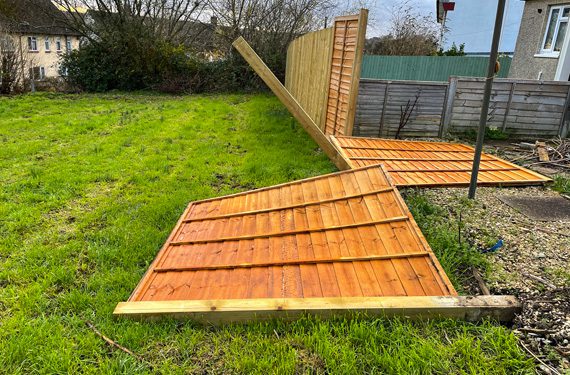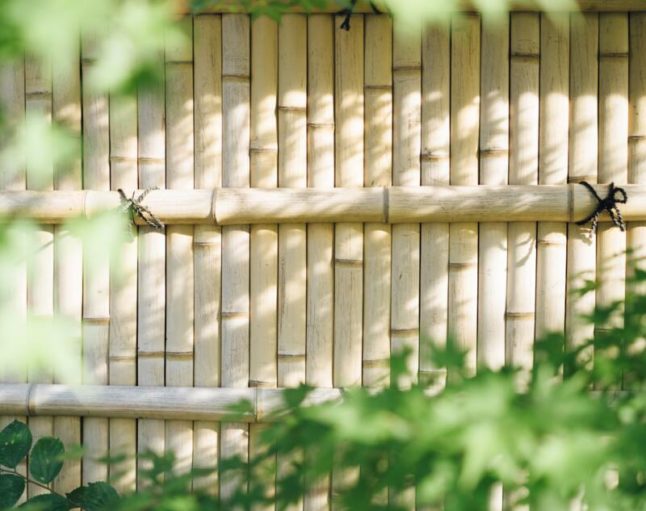All Categories
Featured
Fences give many benefits for property owners, consisting of privacy, protection, and improving aesthetic charm. Below are several crucial signs that your fence could require to be changed.
![]()
![]()
![]()
Final thought. A fence is a useful investment in your residential property's safety, appearance, and personal privacy. As with any type of framework, it will at some point reveal indicators of age and wear. Whether it's with physical damages, pest infestations, rot, or simply the all-natural progression of time, recognizing the indicators that your fence needs to be changed can help you make an informed choice about when to act. By replacing your fencing at the correct time, you can make certain that your residential property stays secure, aesthetically appealing, and practical for many years to find.
- Substantial Physical Damages. Physical damages to a fence can be created by various factors, consisting of extreme weather condition, dropped trees, or crashes. Search for broken, broken, or missing out on sections of the fence, particularly if they are numerous or influence the total structure. While private fixings are usually feasible, extensive damage may suggest that a complete replacement is more cost-effective. If numerous panels are damaged, or the messages are completely jeopardized, the fence will certainly no much longer offer its key purpose of providing safety and security and privacy.

- Decomposing and Decay. Over time, the rot can spread out throughout the fence, weakening its architectural stability. While local areas of decay may be repaired, if the rot is widespread, replacing the fence is usually the ideal option.
- Leaning or Tilting. A leaning fencing is a clear sign that the posts may have been harmed or that the soil around the articles has actually moved. Fencings that tilt significantly might remain in threat of tipping over, developing a safety and security threat. Changing soil can occur as a result of numerous aspects, such as erosion, tree origin growth, or ground settling. If the leaning is severe, or if efforts to correct the blog posts have actually not worked, replacing the damaged sections or the whole fencing might be necessary to preserve security and security.
- Bug Problem. Insects such as termites, ants, and rats can trigger severe damage to wooden fences. In several cases, parasite infestations can deteriorate the fencing to the point where repair work will certainly not be enough, and substitute may be called for.

- Rust or Rust (For Steel Fencings) Steel fences, including chain-link, aluminum, and wrought iron, are prone to corrosion and rust, particularly in locations with high moisture or salt exposure. With time, corrosion can gnaw at the metal, weakening the structure and creating the fencing to end up being unstable. If the rust is substantial and influencing the integrity of the fencing, repair work might not suffice. In this instance, changing the steel areas or the entire fence is the very best service.
- Discoloring or Staining (For Plastic Fences) Vinyl fencings are a prominent choice because of their reduced upkeep and longevity. They can start to fade or stain over time due to exposure to sunlight and severe weather conditions. While some fading can be cleaned up with suitable cleaners, too much staining may make the fencing appearance undesirable. If the fence is showing indicators of substantial fading, particularly if it impacts the general appearance of your residential or commercial property, replacing it with a new plastic fence or a different material may improve both aesthetic appeals and functionality.
- The Fencing is Out-of-date or No Longer Fulfills Your Demands. In some cases, the requirement to change a fence isn't due to damage, however because it no more fits your demands or the style of your home. If your fence is obsoleted, doesn't give adequate personal privacy, or no longer supplies the degree of protection you need, it might be time for an upgrade. Additionally, if your initial fencing was developed for a specific function, such as keeping pets in, however currently you call for an even more strong barrier for personal privacy or safety, a substitute will make sure the fence serves your existing needs.

- Constant Repair Expenses. If you discover yourself continually fixing areas of your fence, it may be extra affordable to change the whole structure instead of consistently patching it up. Constant repairs can include up with time, and a fence that needs constant focus may not be providing the security and capability you need. A new fence can save you cash over time by lowering continuous upkeep costs.
- Fencing No Longer Offers Personal Privacy or Protection. The primary purposes of several fencings are to offer personal privacy and safety and security. If your fence is no longer offering these purposes-- whether due to voids, damaged framework, or merely an outdated layout-- it may need to be changed. A fencing that does not use ample privacy can leave your home subjected, while a fencing that's no much longer protect can jeopardize the security of your home.
- The Fencing is Near the End of Its Life-span. If your fence is exceeding this age or approaching and shows several indicators of wear, it's a great concept to begin planning for a substitute. Even if the fence shows up to be in good problem, an old fence might be a lot more susceptible to damages, and changing it proactively can conserve you from dealing with unanticipated concerns down the road.
Final thought. A fence is a useful investment in your residential property's safety, appearance, and personal privacy. As with any type of framework, it will at some point reveal indicators of age and wear. Whether it's with physical damages, pest infestations, rot, or simply the all-natural progression of time, recognizing the indicators that your fence needs to be changed can help you make an informed choice about when to act. By replacing your fencing at the correct time, you can make certain that your residential property stays secure, aesthetically appealing, and practical for many years to find.
Latest Posts
Learn About Auto Services & More: Full Repair Options from Montclare Auto Repair
Published May 28, 25
1 min read
Uncover Reduce Expenses on Car Maintenance with Montclare Auto Repair’s Limited-Time Deals
Published May 24, 25
1 min read
The Benefits of Consistent Vehicle Maintenance at Montclare Auto Repair Keeps Your Wallet Happy
Published May 24, 25
1 min read
More
Latest Posts
Learn About Auto Services & More: Full Repair Options from Montclare Auto Repair
Published May 28, 25
1 min read
Uncover Reduce Expenses on Car Maintenance with Montclare Auto Repair’s Limited-Time Deals
Published May 24, 25
1 min read
The Benefits of Consistent Vehicle Maintenance at Montclare Auto Repair Keeps Your Wallet Happy
Published May 24, 25
1 min read